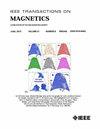Design of a Slotless Structure for Minimizing Cogging Torque and Torque Ripple in a Column Type EPS Motor for Vehicles
IF 2.1
3区 工程技术
Q3 ENGINEERING, ELECTRICAL & ELECTRONIC
引用次数: 0
Abstract
Currently, the automotive market is undergoing a vibrant transition toward component electrification driven by the widespread adoption of electric vehicles. The steering system, electric power steering (EPS), has evolved gradually from traditional hydraulic systems (HPSs) to electric systems. The current state sees the majority of commercial vehicles equipped with electric EPS systems. EPS reduces the steering effort applied to the steering wheel during low-speed driving, enhancing driving convenience. It is widely adopted in most commercial vehicles due to numerous advantages such as system simplification, speed-dependent steering control, and vehicle weight reduction compared to traditional HPSs. EPS can achieve a 3%–5% improvement in fuel efficiency compared to traditional HPSs because it operates only when the driver manipulates the steering wheel. However, what matters most in EPS is vibration and noise. Drivers are directly exposed to the vibration and noise of EPS. Therefore, it is crucial to implement electromagnetic designs that reduce cogging torque and torque ripple, which are the causes of vibrations and noise in electric motors. However, due to the inherent characteristics of electric motors, in structures designed for winding coil windings, such as fixed stator slots and teeth, the variation in reluctance during operation is not consistent. Consequently, this leads to an increase in the occurrence of cogging torque and torque ripple. However, if an EPS motor is designed with a structure lacking stator teeth, the change in reluctance during rotor rotation remains constant. In theory, this would significantly reduce cogging torque and torque ripple when the rotor is in motion. Therefore, in this article, the conventional EPS motor, designed with a structure containing stator teeth resulting in cogging torque and torque ripple, is targeted for reduction. This article designed a slotless motor structure with the goal of significantly minimizing these effects. In this article, pursued a design to achieve the target output of the EPS slotless motor and enhance the overall output density. Ultimately, this motor designed, fabricated, and analyzed a motor for the automotive EPS system with the capability to reduce vibrations and noise while achieving weight reduction.设计一种无槽结构,以尽量减小汽车柱式 EPS 电机的齿槽转矩和转矩波纹
目前,在电动汽车广泛应用的推动下,汽车市场正朝着零部件电气化的方向蓬勃发展。转向系统,即电动助力转向系统(EPS),已从传统的液压系统(HPS)逐步发展为电动系统。目前,大多数商用车辆都配备了电动 EPS 系统。EPS 减少了低速行驶时方向盘所承受的转向力,提高了驾驶便利性。与传统的 HPS 相比,EPS 具有系统简化、随速转向控制和减轻车重等诸多优点,因此被大多数商用车广泛采用。与传统的 HPS 相比,EPS 可提高 3%-5% 的燃油效率,因为它只有在驾驶员操纵方向盘时才会工作。然而,EPS 最重要的是振动和噪音。驾驶员直接受到 EPS 振动和噪音的影响。因此,采用能够降低齿槽转矩和转矩纹波的电磁设计至关重要,而齿槽转矩和转矩纹波正是造成电机振动和噪音的原因。然而,由于电动机的固有特性,在为绕线圈而设计的结构中,如固定的定子槽和齿,运行过程中磁阻的变化并不一致。因此,这会导致齿槽转矩和转矩纹波的增加。然而,如果 EPS 电机设计成无定子齿的结构,转子旋转时的磁阻变化将保持不变。理论上,这将大大降低转子运动时的齿槽转矩和转矩纹波。因此,本文针对传统的 EPS 电机设计了一种包含定子齿的结构,从而减少了齿槽转矩和转矩纹波。本文设计了一种无槽电机结构,目的是将这些影响降至最低。本文追求的设计目标是实现 EPS 无槽电机的目标输出,并提高整体输出密度。最终,该电机设计、制造并分析了一种用于汽车 EPS 系统的电机,该电机能够减少振动和噪音,同时实现减重。
本文章由计算机程序翻译,如有差异,请以英文原文为准。
求助全文
约1分钟内获得全文
求助全文
来源期刊

IEEE Transactions on Magnetics
工程技术-工程:电子与电气
CiteScore
4.00
自引率
14.30%
发文量
565
审稿时长
4.1 months
期刊介绍:
Science and technology related to the basic physics and engineering of magnetism, magnetic materials, applied magnetics, magnetic devices, and magnetic data storage. The IEEE Transactions on Magnetics publishes scholarly articles of archival value as well as tutorial expositions and critical reviews of classical subjects and topics of current interest.
 求助内容:
求助内容: 应助结果提醒方式:
应助结果提醒方式:


